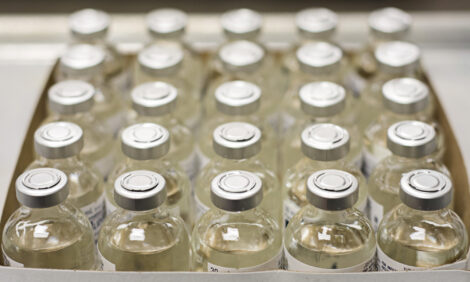



Easter Egg Prices Will Be Lower This Year
NORTH DAKOTA - Consumers often complain that prices for things they buy seem to increase continually, but seldom seem to decline. However, egg prices for this Easter season will be substantially below last year’s levels, according to Tim Petry, North Dakota State University Extension Service livestock marketing economist.
Egg prices usually peak prior to Easter, when strong demand for holiday use occurs. Consumers in the United States purchase 50 percent more eggs during the week before Easter than during a typical week.
Last year, the all-time high monthly retail average price for Grade A, large, white eggs occurred in March at $1.63 per dozen.
“A unique combination of short supply and strong demand factors, led by the increased popularity of low-carb diets, caused the high prices,” Petry says.
Egg producers responded to higher prices by increasing production. By December, prices had fallen to about 98 cents per dozen. Egg prices vary by region in the country, with prices lower near areas of production and higher prices occurring in large, metropolitan areas. However, prices will average from 50 to 75 cents per dozen lower than last year.
“When egg supplies are plentiful, like they are this year, some retailers advertise price specials or use eggs as ‘loss leaders’ to entice customers into the store,” Petry says. “The thought is that customers also will purchase other merchandise, such as egg decorating items and food for the Easter meal.”
Although the large, white egg is the industry standard, consumers will find a variety of egg selections to choose from. Extra-large and jumbo eggs will cost more, with smaller sized eggs at lower prices. Brown eggs are preferred by some customers and are especially popular in the northeast part of the country.
The specialty egg market grew by 24 percent in 2004. Specialty eggs, which usually command premium prices, include pasteurized, natural, cage-free or free-range and organic eggs.
“Nutritionally altered, also called designer eggs, come from hens that have been fed a special diet,” Petry says. “Examples may include vitamin-enhanced eggs or Omega-3 enriched eggs, which come from hens fed flaxseed as part of the feed ration.”
Eggs also are a nutritional bargain. “Eggs are the gold standard in terms of protein digestibility, plus they contain vitamins A, B-12, riboflavin and zinc,” says Julie Garden-Robinson, NDSU Extension food and nutrition specialist.
A large egg has about 80 calories and 5.5 grams of fat. An egg contains about 215 milligrams of cholesterol, which has generated some controversy over the years.
“Nutrition experts now recognize that saturated fat, not dietary cholesterol, is the greater concern in raising blood cholesterol levels,” Garden-Robinson says. In a study of more than 117,000 nurses, scientists reported that eating up to one egg a day was unlikely to increase the risk of heart disease in healthy men and women. For people following special diets, however, it's important to heed the advice of a health professional.
The American Heart Association suggests limiting daily dietary cholesterol to 300 milligrams, or about the amount in one egg.
“It's important to consider not only the eggs that you consume but also the other sources of cholesterol in the diet,” Garden Robinson says.
Source: North Dakota State University Agriculture Communication - 17th March 2005








